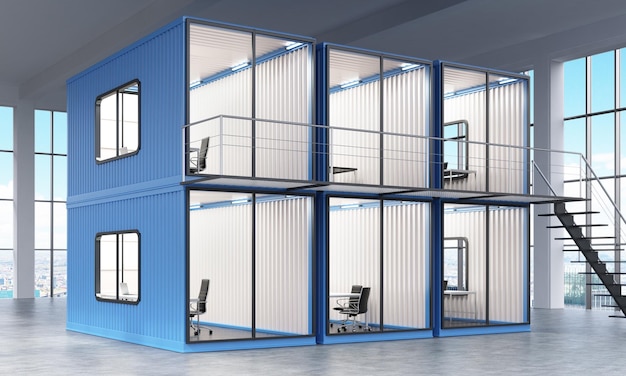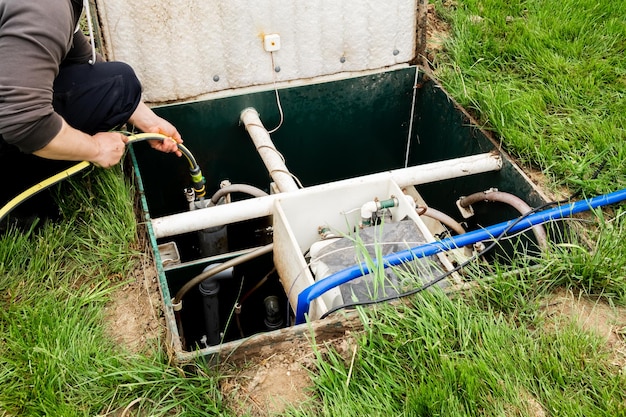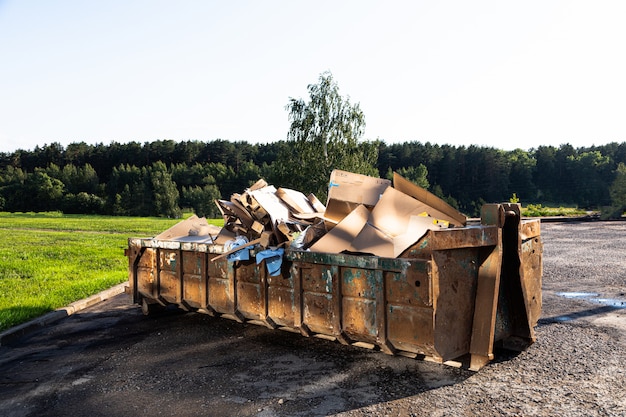Before you can choose the right dumpster size, it’s essential to understand how dumpster sizes are measured. Dumpsters are typically measured in cubic yards, which represents the volume of debris they can hold. A cubic yard is a unit of volume that is equivalent to the space occupied by a cube one yard on each side. This measurement helps determine how much material the dumpster can contain, making it easier to match the size with the project requirements.
Common sizes range from 10 to 40 cubic yards. Each size caters to different types of projects, from minor home cleanouts to large-scale construction work. Understanding these sizes and what they can accommodate will help you avoid the inconvenience of a too-small dumpster or the unnecessary expense of a too-large one. Here’s a quick breakdown:
- 10-Yard Dumpster: Ideal for small cleanouts or minor remodeling projects. This size is perfect for those quick weekend projects where you need to clear out a garage or dispose of yard waste.
- 20-Yard Dumpster: Suitable for medium-sized renovation jobs or large cleanouts. This dumpster size can handle projects like removing old carpets or tackling a kitchen renovation.
- 30-Yard Dumpster: Great for major home renovations or construction of a small building. It can hold large amounts of debris, making it suitable for more extensive renovations or commercial cleanouts.
- 40-Yard Dumpster: Best for large construction projects, commercial cleanouts, or major renovations. This is the go-to size for contractors dealing with large-scale demolitions or new constructions.
Using a Dumpster Size Calculator
When you’re unsure about the size you need, a dumpster size calculator can be an invaluable tool. These calculators allow you to input details about your project, such as the type and volume of debris, to recommend the right dumpster size. By taking into account the weight and volume of the materials you plan to dispose of, these tools provide a more accurate estimate than simple guesswork.
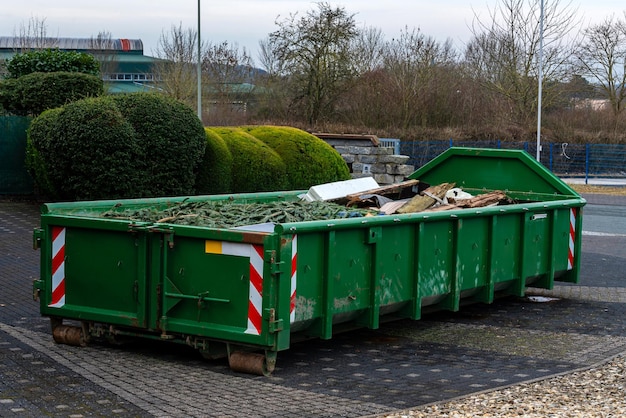
Many dumpster rental companies offer these calculators on their websites, making it easy to find the perfect fit. They often include guidelines on how to measure debris and what factors to consider, such as the type of material and the frequency of disposal. Utilizing a calculator can prevent you from overpaying for space you don’t need or underestimating the space required for your waste. This ensures that you get a dumpster that is both cost-effective and efficient for your project’s needs.
Dumpster Size Comparison: Which One to Choose?
Let’s compare the most common dumpster sizes to help you determine which is best for your project. Each size has its specific advantages and is tailored for different types of waste disposal, helping you streamline your project management.
10-Yard Dumpster
- Dimensions: Approximately 10 feet long, 8 feet wide, and 4 feet high.
- Best For: Small projects like garage cleanouts, minor home renovations, or yard waste removal. It’s an ideal size for homeowners looking to do a bit of decluttering or minor remodeling without much hassle.
- Pros: Compact size is easy to fit in tight spaces. Its small footprint makes it versatile for urban areas or homes with limited driveway space.
- Cons: Limited capacity may require multiple trips for larger projects. If you underestimate your waste volume, you might find yourself needing an additional dumpster, which could increase costs.
20-Yard Dumpster
- Dimensions: Around 22 feet long, 8 feet wide, and 4.5 feet high.
- Best For: Mid-sized projects such as kitchen or bathroom remodels, roofing jobs, or basement cleanouts. Its capacity is flexible enough to accommodate mixed debris, from wood to tiles.
- Pros: Versatile and can handle a variety of debris types. This makes it a popular choice for contractors who deal with mixed materials.
- Cons: May be too large for very small projects. If you’re working on a limited scope, the extra space might go unused, making it a less cost-effective option.
30-Yard Dumpster
- Dimensions: About 22 feet long, 8 feet wide, and 6 feet high.
- Best For: Larger home renovations, construction projects, or commercial cleanouts. This size is suitable for projects that generate a substantial amount of waste, ensuring fewer interruptions.
- Pros: Can hold a significant amount of debris, reducing the need for multiple rentals. This can save time and reduce logistical challenges during a project.
- Cons: Requires more space for placement. You’ll need to ensure ample room on your site to accommodate this larger dumpster.
40-Yard Dumpster
- Dimensions: Approximately 22 feet long, 8 feet wide, and 8 feet high.
- Best For: Major construction projects, large demolitions, or major cleanouts. It’s designed for maximum capacity, making it ideal for extensive commercial projects or complete property renovations.
- Pros: Maximum capacity for large-scale projects. It allows for efficient waste management without frequent emptying.
- Cons: Requires ample space and may be overkill for smaller jobs. Its large size means you’ll need sufficient area for placement, and if your project doesn’t need such capacity, you might be overspending.
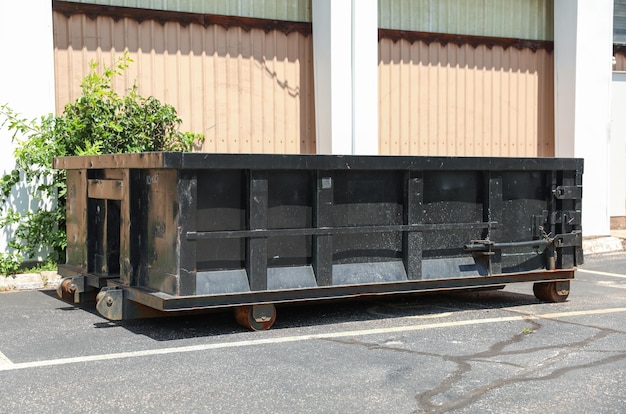
Factors to Consider When Choosing a Dumpster Size
When selecting a dumpster size, consider the following factors. Each plays a crucial role in ensuring that the chosen dumpster meets your project’s unique demands.
Project Type and Scope
The type and scope of your project will significantly impact the size of the dumpster you need. For instance, a small bathroom remodel will require a different size than a full home renovation. Assessing the full extent of your project helps in determining not just the volume of debris, but also the type, which can influence weight limits and disposal methods.
Understanding whether you are dealing with heavy materials like concrete or lighter debris such as wood can also affect your choice. Additionally, future-proof your selection by considering potential changes in project scope. This ensures that any unexpected increase in waste volume can be accommodated without the need for additional dumpster rentals.
Type of Debris
Different projects generate different types of debris. Construction debris, such as drywall, wood, and concrete, can quickly fill up a dumpster. Consider the weight and volume of the materials you’ll be disposing of. Heavy materials like bricks and concrete might require a smaller, sturdier dumpster even if the volume is low, while lighter materials might need more volume but are less dense.
Also, some materials have specific disposal regulations that might impact the size or type of dumpster you need. For instance, hazardous materials often require special handling and cannot be mixed with other debris. Understanding these nuances helps ensure compliance with environmental laws and prevents potential fines.
Available Space
Ensure you have enough space on your property to accommodate the dumpster. Measure the area where you plan to place the dumpster to ensure it will fit comfortably. Consider factors such as accessibility for the delivery truck and the proximity to the project site for ease of use.
Also, take into account any potential obstacles like trees, wires, or uneven ground that might affect placement. Planning the placement carefully can prevent damage to your property and ensure that the dumpster is efficiently utilized throughout the project.
Local Regulations
Check local regulations regarding dumpster placement and usage. Some areas have restrictions on where dumpsters can be placed or require permits for certain sizes. Regulations can vary greatly depending on whether you’re in a residential neighborhood or a commercial zone.
Familiarize yourself with these rules to avoid fines or project delays. Reach out to local authorities if you’re unsure about specific requirements, and always ensure that the placement complies with both local bylaws and homeowners’ association guidelines if applicable.
Budget
Larger dumpsters generally cost more to rent. Balance your budget with your project needs to find the most cost-effective solution. While it might be tempting to choose the smallest option to save money, this can backfire if it leads to multiple rentals or overage fees.
Consider the entire lifecycle cost, including potential fines for overfilling or additional costs for extra pickups. A slightly larger dumpster might initially seem more expensive, but it could save money in the long run by reducing logistical costs and ensuring compliance with weight limits.
Tips for Renting the Right Dumpster
- Consult with Professionals: Speak to a dumpster rental company about your project needs. They can provide valuable insights and recommend the best size for your situation. Their experience with similar projects can offer perspectives you might not have considered.
- Plan Ahead: Estimate the amount of debris your project will generate and choose a dumpster size accordingly. Early planning helps ensure availability and can sometimes lead to discounted rates for advance bookings.
- Avoid Overfilling: Overfilling a dumpster can lead to additional fees and safety hazards. Choose a size that allows for some buffer space. Ensure that the waste level does not exceed the top edge of the dumpster to prevent spillage during transport.
Conclusion: Making the Right Choice
Choosing the right dumpster size for your construction project doesn’t have to be a daunting task. By understanding the different sizes, using a calculator, and considering your project’s specifics, you can make an informed decision. Thorough planning and consideration of all influencing factors can significantly streamline the waste management process and contribute to the overall success of your project.
Remember, selecting the right size can save you time and money in the long run, ensuring your project runs smoothly. Whether you’re undertaking a small home renovation or a large construction project, having the right dumpster will make waste disposal easy and efficient. Now that you have the ultimate guide to dumpster sizes, you’re ready to tackle your next project with confidence! Embrace the convenience and efficiency of a well-chosen dumpster and focus on the other important aspects of your construction work.



